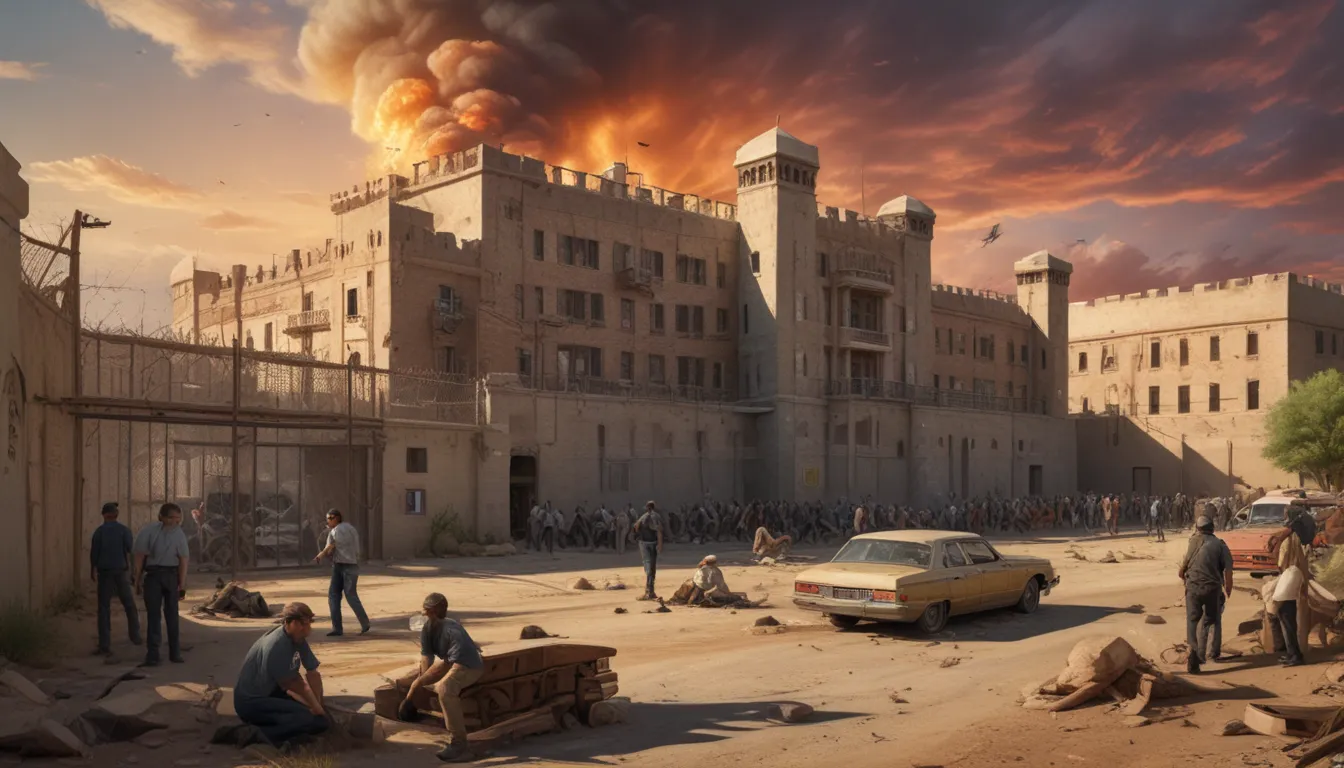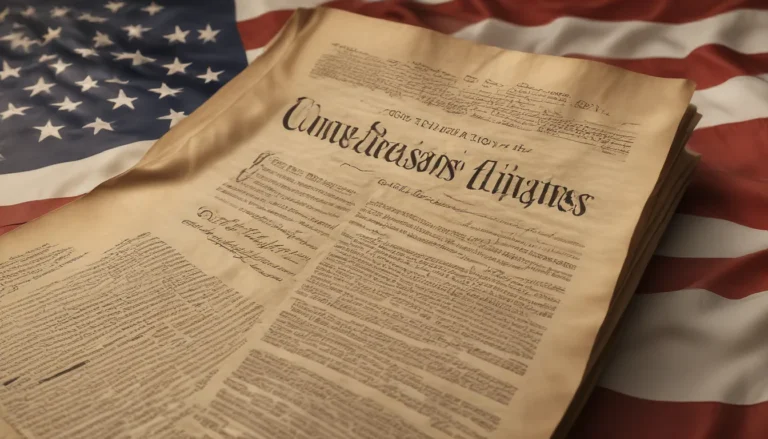The images in our articles may not match the content exactly. They are used to grab your attention, not to show the exact details in the text. The images complement the text but do not replace it.
The New Mexico State Penitentiary Riot of 1980 was a tragic event that left a lasting impact on the American prison system. Over the course of two days, lives were lost, property was destroyed, and significant changes were made in the management of prisons. In this article, we will delve into 20 fascinating facts about the New Mexico State Penitentiary Riot, shedding light on the details and repercussions of this notorious incident.
The Origins of Chaos: A Tragic Chapter in Prison History
The New Mexico State Penitentiary Riot, also known as the Santa Fe Prison Riot, erupted on February 2, 1980, and lasted until February 3 at the maximum-security prison in Santa Fe, New Mexico. Regarded as one of the deadliest prison riots in the United States, the riot commenced at 1:40 am when two inmates overpowered a police officer, setting the stage for the mayhem that ensued.
Unveiling the Catalyst: The Spark that Ignited the Fire
Intoxicated from homemade liquor brewed within the prison, the inmates found themselves in a volatile situation. Compounded by issues like overcrowding, abuse by correctional officers, and inadequate healthcare, the prisoners seized the moment to rebel against the oppressive conditions they were subjected to within the prison walls.
The Grim Toll: Devastating Loss of Life
Tragically, 33 inmates lost their lives during the riot, and over 200 sustained injuries. Many inmates, particularly those in cell block 4, were subjected to brutal violence, while others succumbed to fires or suffocation. The aftermath of the riot left a trail of injuries among both inmates and correctional staff.
Chaos Unleashed: Destruction and Mayhem
The riot left the prison facility in shambles, with cell blocks razed to the ground, offices vandalized, and control rooms demolished. The entire prison lay in ruins by the time the violence subsided, showcasing the extent of the destruction wrought by the rioting inmates.
The Hand of Influence: Inmate Organizations
Inmate organizations such as the Mexican Mafia and the Black Guerrilla Family played a pivotal role in orchestrating and fueling the riot. These groups sought to assert control and wield power within the confines of the prison system, contributing to the escalation of the unrest.
The Voice of Rebellion: Negotiations and Demands
Amidst the chaos, inmates presented a list of demands to the prison administration. These demands encompassed improvements in living conditions, fair treatment, and enhanced opportunities for education and rehabilitation, signaling their resolve to address the systemic issues that plagued the prison.
A Tumultuous Response: Ineffectiveness in Management
The initial response to the riot was fraught with delays and inadequate planning. Law enforcement agencies struggled to regain control of the situation, leading to prolonged violence and further loss of life as chaos reigned within the prison walls.
Unconventional Tactics: The Use of Helicopters
To quell the uprising, authorities resorted to utilizing helicopters to drop tear gas into the prison grounds. This unconventional tactic proved effective in dispersing the rioting inmates and paving the way for the restoration of order within the facility.
Shaping the Future: Impact on Prison Reform
The New Mexico State Penitentiary Riot catalyzed significant changes in the American prison system. It underscored the imperative for prison reform, drawing attention to issues such as inmate rights, overcrowding, and the rehabilitation of offenders as crucial areas in need of improvement.
Seeking Justice: Investigations and Accountability
In the aftermath of the riot, comprehensive investigations were conducted to unearth the root causes and assign accountability. The findings spurred reforms in prison management and the prosecution of those responsible for the violence, ensuring that justice was served.
Learning from Tragedy: Lessons Gleaned
The New Mexico State Penitentiary Riot served as a poignant lesson for the prison system, laying bare the flaws and inadequacies endemic within correctional facilities. This tragic event prompted the implementation of enhanced safety measures, improved inmate management, and increased transparency to prevent future occurrences.
Road to Recovery: Rebuilding After the Storm
Reconstructing the prison post-riot was a formidable and protracted endeavor. Extensive renovations and reforms were necessary to reinstate order and establish a safer environment for both inmates and staff, signifying a pivotal phase in the aftermath of the riot.
Honoring the Fallen: Remembering Victims
A memorial erected near the site of the former New Mexico State Penitentiary stands as a tribute to the lives lost during the riot. The memorial serves as a poignant reminder of the tragic consequences of the incident, advocating for the cause of prison reform in its wake.
Cinematic Chronicle: Documentaries and Cultural Impact
The New Mexico State Penitentiary Riot has been the subject of various documentaries and films, shedding light on the events, the individuals involved, and the enduring impact of the riot on the American prison system. These cinematic works serve to immortalize the legacy of the riot for posterity.
Shaping Policies: Influence on Policy and Legislation
The riot spurred profound changes in prison policies and legislation, prompting a reevaluation of human rights protections, efforts to reduce overcrowding, and the provision of essential resources for inmate rehabilitation. These legislative strides signify a concerted effort towards reform in the aftermath of the riot.
Enduring Legacy: The Echoes of the Riot
The New Mexico State Penitentiary Riot remains a poignant symbol of the trials confronting the prison system. It stands as a tribute to the ongoing struggle for justice, reform, and equitable treatment of inmates within the correctional milieu, underscoring the profound impact of the riot on the landscape of American prisons.
Securing Safety: Enhanced Safety Measures
Post-riot, corrections departments nationwide implemented stringent safety protocols within prisons. These measures were devised to forestall similar incidents and ensure the well-being of both inmates and staff, marking a decisive shift towards fortifying security within the prison environment.
The Imperative of Rehabilitation: Prioritizing Inmate Welfare
The riot underscored the pivotal role of rehabilitation in the correctional system. It emphasized the necessity of furnishing inmates with avenues for education, vocational training, and mental health support to curtail recidivism rates and empower incarcerated individuals towards successful reintegration into society.
Collective Advocacy: Collaborative Efforts for Reform
In the wake of the riot, a coalition of organizations and individuals dedicated themselves to advocating for prison reform. Through collaborative endeavors between activists, lawmakers, and correctional institutions, substantial progress has been achieved in enhancing prison conditions and effecting positive change within the system.
Persevering Amidst Challenges: The Ongoing Crusade
Despite strides made in the aftermath of the New Mexico State Penitentiary Riot, persistent challenges persist within the prison system. Continued advocacy and unwavering dedication are indispensable in ensuring that the lessons gleaned from this tragic event remain etched in the annals of the correctional landscape.
Parting Reflections: A Reminder of Imperatives
The New Mexico State Penitentiary Riot stands as a poignant reminder of the complexities and deficiencies inherent in the prison system. By delving into the facts and repercussions of this incident, we garner a profound insight into the imperative of ongoing reform and the unyielding pursuit of justice within the realm of corrections.
Addressing Queries: Frequently Asked Questions
How long did the New Mexico State Penitentiary Riot last?
The riot persisted for two days, unfolding from February 2 to 3, 1980.
How many inmates perished during the riot?
A total of 33 inmates tragically lost their lives during the New Mexico State Penitentiary Riot.
Were there significant improvements in the prison system post-riot?
Indeed, the riot catalyzed substantial changes in prison policies and legislation, resulting in advancements in safety measures, inmate rehabilitation programs, and human rights protections.
Is the prison operational following the riot?
After undergoing extensive renovations and reforms, the New Mexico State Penitentiary continues to be operational to this day, symbolizing a resilient resurgence post-riot.
Are there memorials commemorating the victims of the riot?
A memorial was erected near the former site of the New Mexico State Penitentiary to honor the lives lost during the riot and advocate for the cause of prison reform, paying homage to the fallen in the aftermath of the tragic event.
Concluding Thoughts
The tale of the New Mexico State Penitentiary Riot serves as a poignant narrative of the challenges and reckonings within the prison system. By examining the truths and repercussions of this incident, we gain a profound understanding of the imperative for perpetual reform and the unwavering quest for justice within the corridors of correctional facilities.






